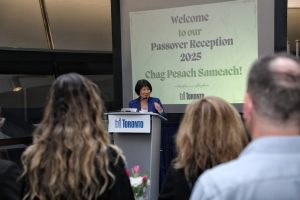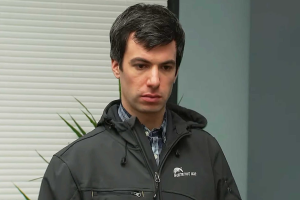“F–king Jew” were the words that inevitably greeted me most days, as I entered Ottawa’s Osgoode Street
Public School in 1960.
I was one of only two Jewish children in my school and a day did not go by that I wasn’t reminded of my Jewish heritage. When I would complain to my father, who had been a partisan during the war and himself a survivor of the Shoah, he would inevitably tell me that it’s a tough world out there and I needed to learn to stand up for myself.
Things didn’t get much better in high school. While there were a few more Jews at the school, anti-Semitism remained a real part of Jewish life in Ottawa throughout the 1960s.
One particular episode has stuck with me over the years, because it showed me that there were decent people who were willing to stand up against Jew hatred. Following gym class, we would find ourselves in the locker room. It was there that one particular student, Michael, would target me with anti-Semitic invectives. Early in the school year, Peter Iswolsky, a non-Jew who was the captain of the football team, demanded that Michael apologize to me.
I’ve never forgotten Peter’s words: “In this locker room, it doesn’t matter if you are white, green, black or purple, everyone is the same.” It was a courageous thing for a 15 year old to say and he remains an inspiration to me to this day.
All of this is to say that anti-Semitism is something that I understand on both an intellectual and a viscerally personal level.
My three decades at the Canadian Jewish Congress were marked with having to handle a myriad of anti-Semitic incidents. Ranging from school board guidelines on the teaching of The Merchant of Venice, to incidents of Jewish citizens and institutions being targeted by neo-Nazis and white supremacists, I have seen it all.
However, the nightmare that haunted my dreams was the real possibility that anti-Semitism would one day move from verbal taunts and swastikas spray-painted on Jewish buildings, to physical assaults and even murder. Indeed, the thought of a shooter entering a Jewish community centre or a synagogue was an image I could never shake.
READ: FARBER: RECOGNIZING THE TRAILBLAZERS IN OUR COMMUNITY
Next month will mark two years since Alexandre Bissonnette walked into the mosque in Sainte-Foy, Quebec, armed with a rifle and murdered six Canadian Muslims at prayer, while wounding 19 others. That tragedy terrified both the Jewish and Muslim communities.
And now, only a few short weeks ago, another hater blinded by anti-Semitism entered the Tree of Life synagogue in Pittsburgh and murdered 11 Jews on a sunny Shabbat morning.
Its reverberations were felt around the world. In Jewish communities everywhere, security was reevaluated. We all knew that any of us could have been a target, or could become a target. On that fateful day in October, the world changed for us.
One thing the two shooters had in common, besides their primitive hatred of “the other,” was the manner in which they became radicalized. Both Alexandre Bissonnette and alleged Pittsburgh shooter Robert Bowers had their anger and revulsion stoked online by white supremacist conspiracy theories that targeted both Jews and Muslims.
Unlike a decade ago, today, neo-Nazis and white supremacists do not gather in large warehouses to groove to hate rock music. Today, recruitment is an online activity spurred by high-profile white supremacist enablers.
Nowadays, neo-Nazis have gone mainstream. They have cleaned up their act and can easily be found spreading their poison on podcasts, YouTube and Facebook, as well as other dark corners on the Internet.
Indeed, even within our own Jewish community, we have been witness to an inexplicable but serious phenomenon: Ontario Jews supporting and voting for well-known racists and white supremacist enablers. Stay tuned for my column next month, where I will examine this ugly new spectacle.






